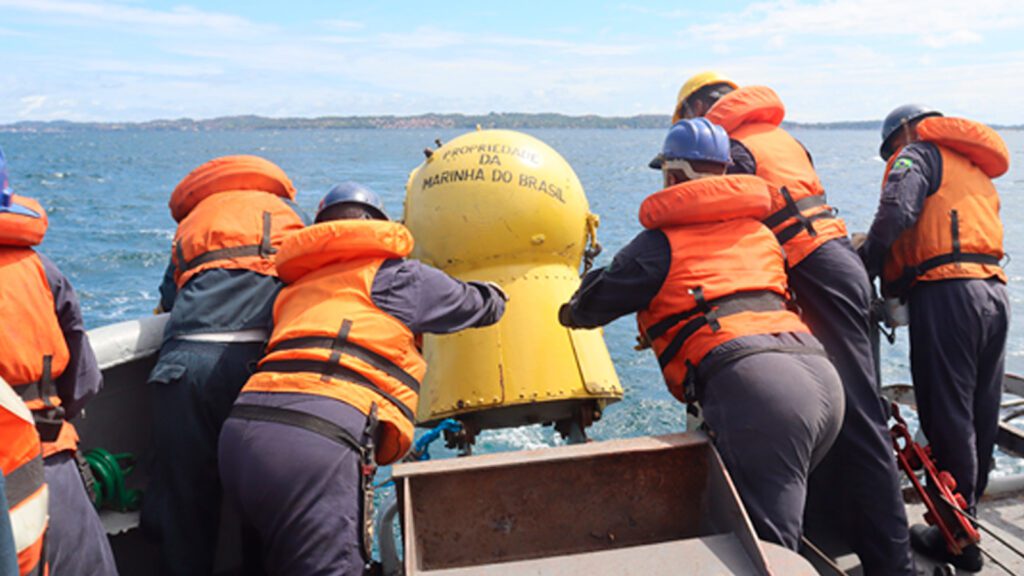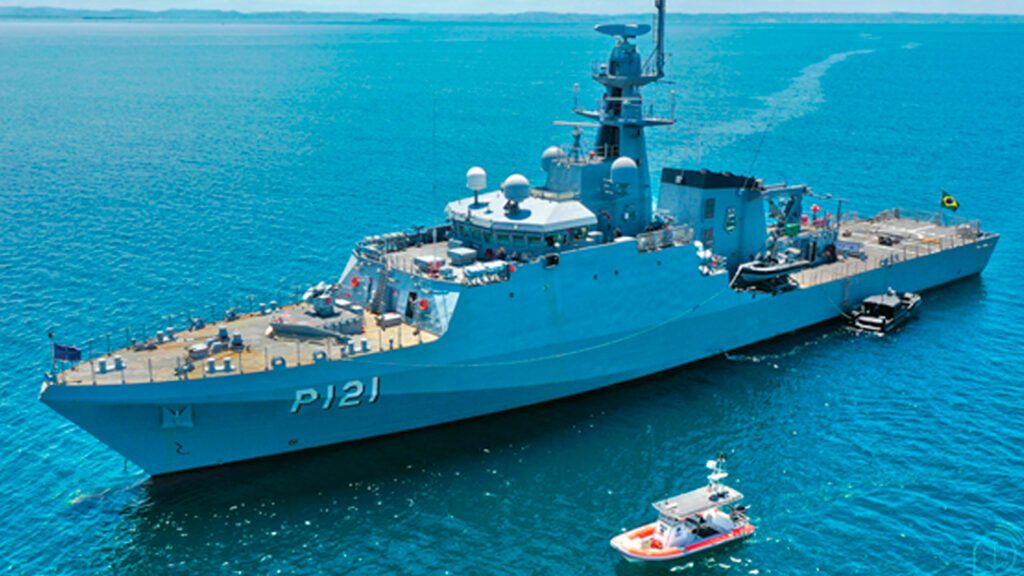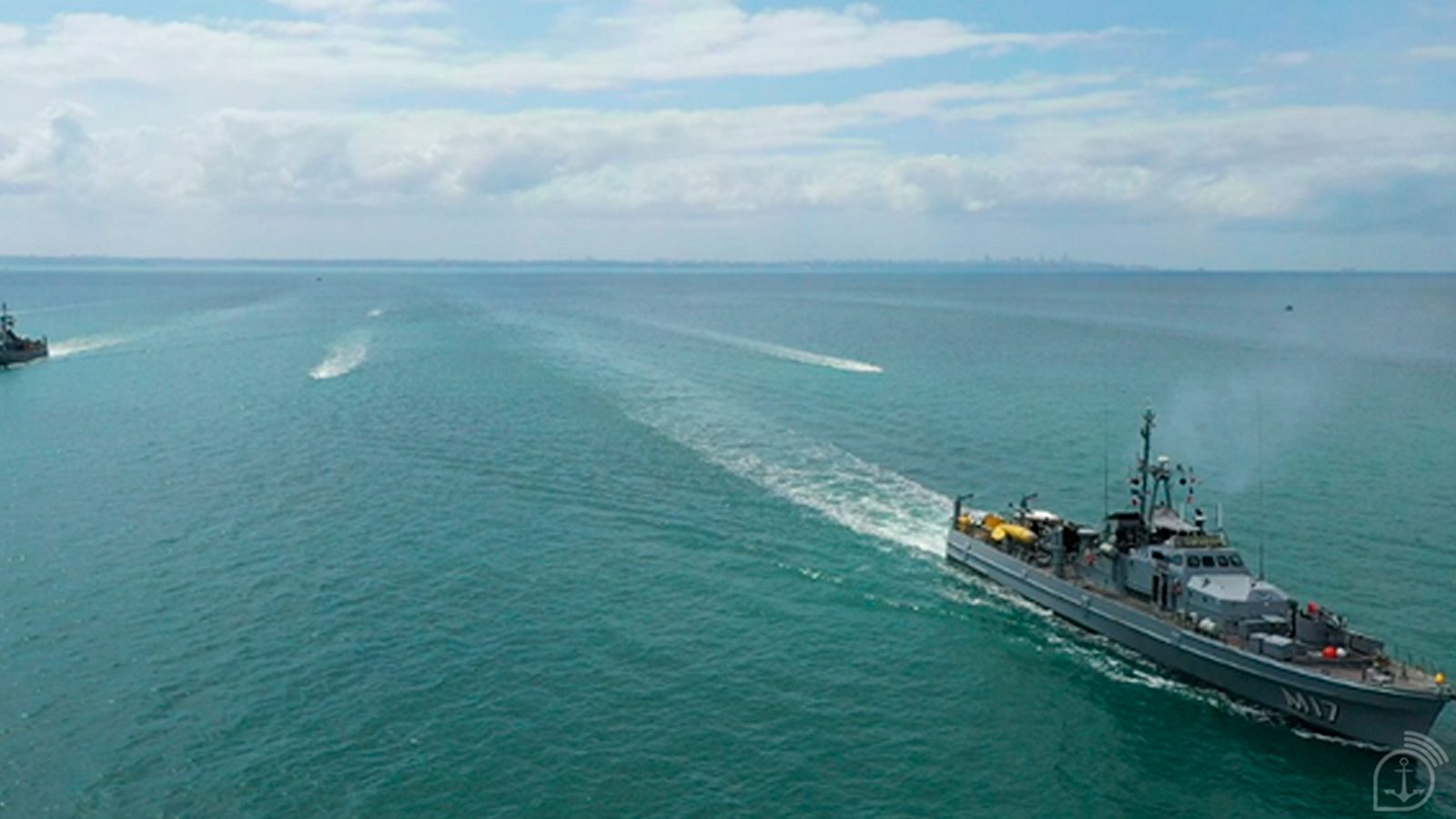Exercise MINEX-23 saw the unprecedented use of unmanned systems in mine countermeasures
By Agência Marinha de Notícias – Salvador, BA
Launched in maritime areas of high strategic value, such as ports, oil fields or busy shipping lanes, naval mines can pose a serious threat to a country that depends so much on maritime traffic, as is the case with Brazil. Hidden beneath the surface, mines are naval warfare artifacts that offer one of the best cost-benefit ratios when the aim is to prevent or hinder the movement of enemy vessels.
Seeking to raise the level of training of its units specialized or potentially employed in mine warfare actions, the Brazilian Navy (MB) successfully concluded exercise MINEX-23 last Friday (27), after ten months of planning and a week of operational activities in the waters of Todos-os-Santos Bay.
The novelty of this edition of the exercise was the use, on a test basis, of unmanned vessels, signaling the incorporation, in the near future, of new mining countermeasure techniques by the MB, in addition to the naval minesweeping capabilities, already mastered by the Institution, through the vessels of the Mining and Sweeping Force Command.
In order to make the best use of the actions, the MINEX-23 exercise was divided into three stages: the preparatory stage, with plans drawn up and meetings held over the last few months; the pre-sail briefing, which took place on October 19; and the sea stages, subdivided into four phases.
Operations at sea
The first sea phase, called “Imaging”, began on October 20, when the “Aldebaran” Beacon Warning, a ship subordinate to the Eastern Nautical Signaling Service, sailed into Todos-os-Sanos Bay and carried out preliminary imaging of the exercise area, near Itaparica Island, using sidescan sonar. On October 23, the second sea phase (“Minagem”) began, in which the “Caboclo” corvette launched SH-60E mines, without an explosive charge, and Mine Like Objects (objects that simulate sea mines), in an area previously marked out for the exercise.
The use of unmanned vehicles took place between the 24th and 26th, with operational tests and the launch of the Unmanned Surface Vehicle (VSNT-Lab), developed by the Naval Systems Analysis Center, from the Ocean Patrol Vessel “Apa”; and the VSNT SUPPRESSOR X, developed by Empresa Gerencial de Projetos Navais, in partnership with the company Tidewise.
The fourth and final phase at sea, “Sweeping and Demobilization”, began on the 27th, when the “Atalaia” and “Araçatuba” Vessels carried out the mining countermeasures operation, using mechanical sweeping; and the “Caboclo” Corvette refloated and collected the exercise mines, with the participation of a team of divers from the Aratu Naval Base.
Mechanical sweeping is a mine countermeasure technique in which vessels launch devices into the sea capable of towing long steel cables with blades that break the mines’ tethers, bringing them to the surface for later deactivation by divers specialized in Explosive Ordnance Disposal.
Assessment of the exercise
The Commander of the 2nd Naval District, Vice-Admiral Antonio Carlos Cambra, pointed out that this is a complex exercise, which requires detailed planning and involves various sectors of the Navy. “It took ten months of planning that directly or indirectly involved various sectors of the Navy: operational, material, personnel, research and scientific-technological.
During MINEX, we carried out operational procedures that will become doctrinal procedures, so that the results will enable the Navy to evolve even further in mine warfare and mine countermeasures, as well as in the operation of Unmanned Maritime Systems, which were used in an unprecedented way in South America.”
In addition to the “Caboclo” Corvette, the “Atalaia” and “Araçatuba” Vessels, the “Aldebaran” Beacon Notice and the “Apa” Ocean Patrol Vessel, the “Dourado” Patrol Notice, armored speedboats from the Eastern Naval Patrol Group Command and speedboats from the Bahia Port Captaincy also took part in the exercise, working to control the maritime area and escort the VSNTs.

MINEX-23 also saw the participation of representatives from various Navy Military Organizations, based in Salvador and Rio de Janeiro, who acted as executors or observers of the exercise, including the Naval Operations Command, the Navy’s General Directorate of Material, the Navy’s Program Management Directorate, the Command of the 2nd Naval District, Navy Weapons Systems Directorate, Naval Warfare Doctrinal Development Center, Naval Systems Analysis Center, Naval Projects Management Company, Maritime Operations and Blue Amazon Protection Command, Bahia Port Captaincy, Eastern Naval Patrol Group Command, Mining and Sweeping Force Command and Eastern Nautical Signaling Service.
Source: Agência Marinha de Notícias
